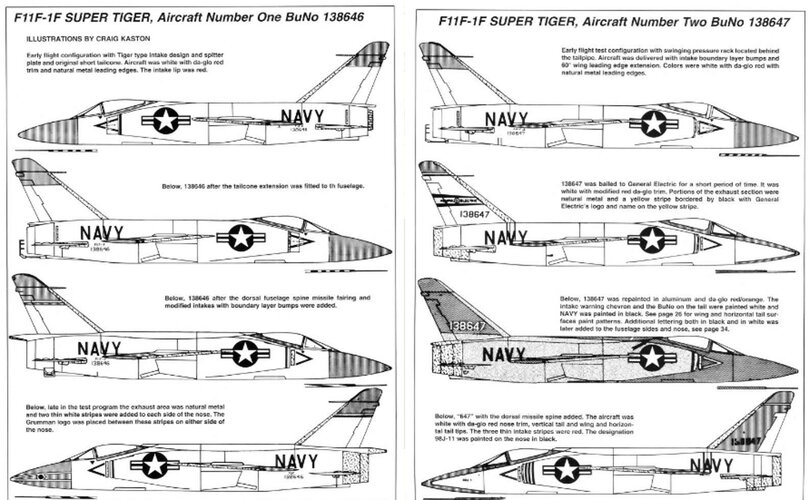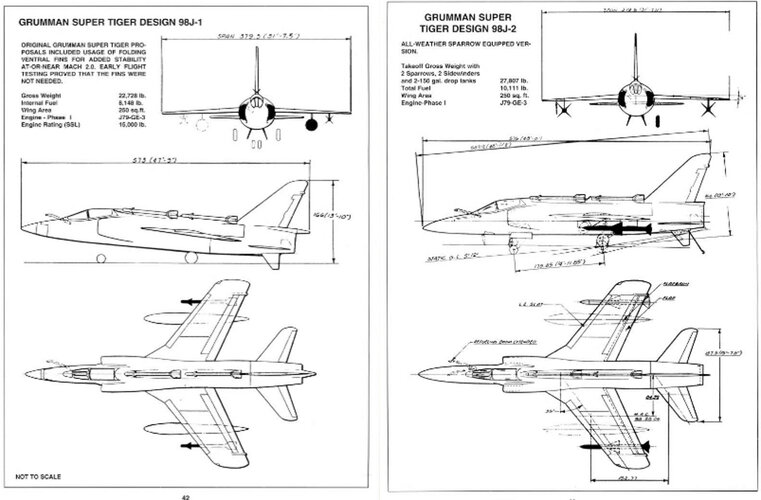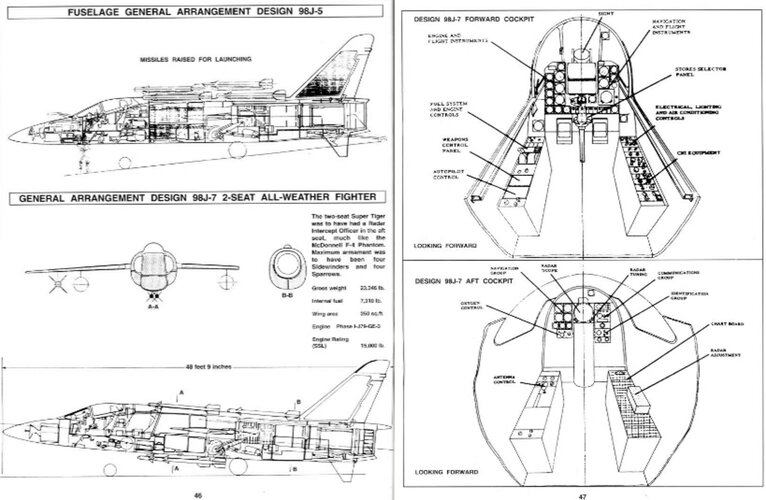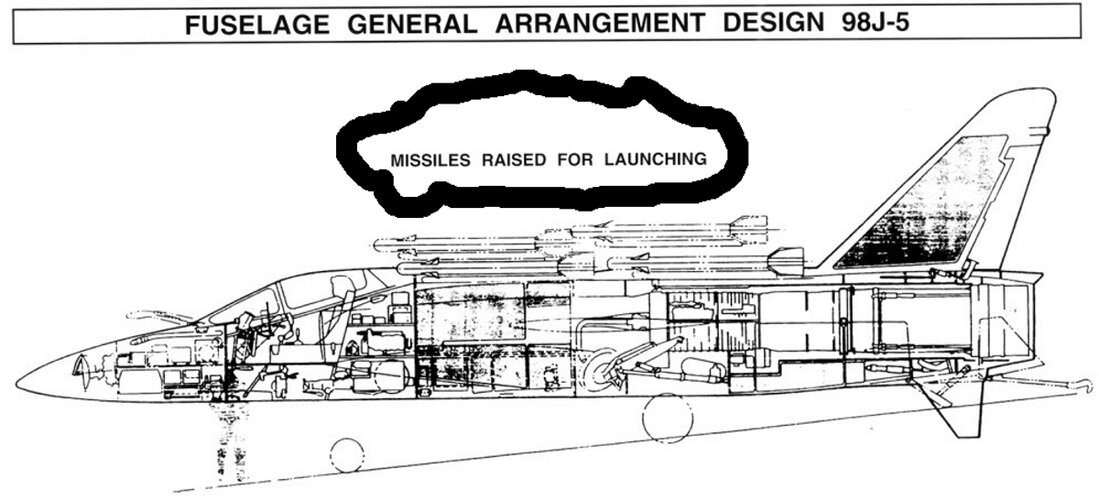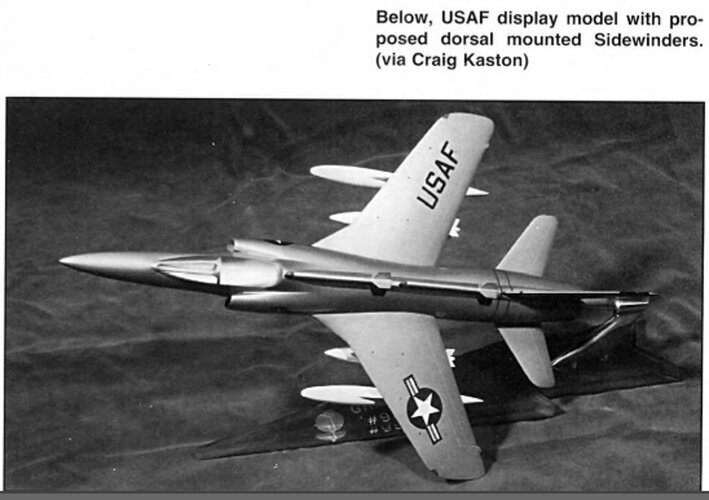Hi! Dorsal launcher.
Also you can see folded ventral vertical tail fin.

blog.livedoor.jp
The F11F was developed to be the U.S. Navy's first supersonic carrier-based fighter, but its service period was shortened due to the inadequacy of the engine.
In 1955, Grumman developed the F11F-1F Super Tiger, an improved version of the F11F-1F that replaced the engine with the powerful GE J-79, but the Navy was not interested.
The F11F-1F sought overseas sales channels, and at one point almost became the winner of the Air Self-Defense Force's FX selection, but was ultimately defeated by the Lockheed F-104.
Since it was originally a small aircraft, even if the engine was strengthened, not only did the cruising range decrease, but the lack of versatility was not solved.
Perhaps that's why the development plan for the F11F-1F attempted to add more hardpoints.
But the place is a little too whimsical.
The plan was to mount the AIM-9 in tandem on the Dorsal spine/launcher, and the first unit (Bu No. 138646) was actually equipped with it.
In addition, two parallel shots on the underside of the fuselage and two shots on the outboard pylons of the main wing (AIM-7) for a total of 6 shots! Boom!
However, there is no denying the feeling of suffering. (In addition, the folded bentralphin can be confirmed)
This is because the AIM-9 (dummy) in front interferes with the sliding windshield.
By the way, this design was "98J-5" and the aircraft for Japan was "98J-11", so if you are lucky (of course, you can also see "if you are unlucky"), it is possible that the Super Tiger with this armament configuration would have flown in the skies of Japan.
Two prototypes of the F11F-1F were built, and the project was closed.
The first unit in question, Bu No. 138646, was used for fire training and was scrapped at some point in the 1980s.

